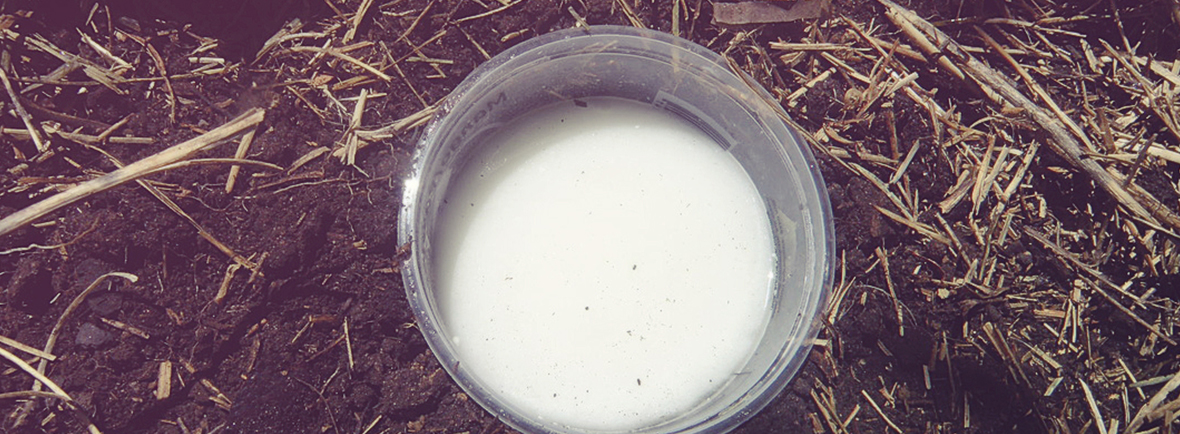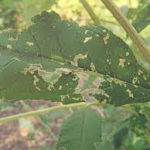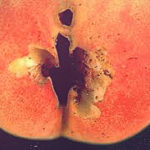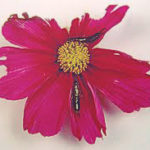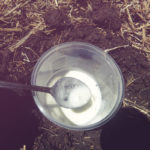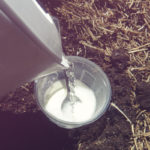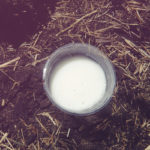Earwigs and Slaters
I have had several people contact me during this month saying that they have been having trouble with earwigs and slaters in their garden, eating their small seedlings. I was intrigued, so went searching to find out more.
We will look at both of these creatures in this blog, exploring their habits, benefits and how to control them. Like many of the creatures in Australia, there are both native and introduced species, including millipedes, cockroaches, earwigs and slaters.
Earwigs
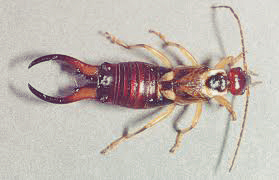 An age old superstition gives the earwig its name – these insects were said to crawl into the ears of sleeping people! In reality they rarely bite, except when surprised.Earwigs have large, pincer-like protrusions at the rear of their body, which act as forceps to catch prey and fight. They enjoy an omnivorous diet of some vegetation, but mostly meat in the form of other small creatures. This diet can be beneficial, as earwigs feed on a variety of soft bodied insect pests such as aphids, mealy bugs and mites, and eggs and/or larvae of a range of other creatures such as codling moth and slugs and snails.
An age old superstition gives the earwig its name – these insects were said to crawl into the ears of sleeping people! In reality they rarely bite, except when surprised.Earwigs have large, pincer-like protrusions at the rear of their body, which act as forceps to catch prey and fight. They enjoy an omnivorous diet of some vegetation, but mostly meat in the form of other small creatures. This diet can be beneficial, as earwigs feed on a variety of soft bodied insect pests such as aphids, mealy bugs and mites, and eggs and/or larvae of a range of other creatures such as codling moth and slugs and snails.
One very endearing trait that female earwig exhibits is an instinct to care for their eggs and young. The females will turn, lick and reposition their eggs, bring food to the newly hatched young and protect them in the nest.
There are more than 60 native Australian species of earwigs, which are very beneficial to gardeners. The variety that can bother some gardeners in the South of Australia is the introduced European earwig. Usually they can be a useful predator and don’t cause any trouble, but like all living creatures, favorable conditions can sometimes result in a buildup of populations and they can become a problem by eating garden plants and entering houses.
Earwigs are mainly active at night and hide during the day in dark and moist spaces. During the summer they congregate in groups (aestivate) to shelter from hot weather, preferring areas that are shaded or filled with a covering of plant material, organic mulch or debris.
Damage
Earwigs become a problem when they attack growing plants, especially tender young seedlings. Seedlings and flowering plants can be severely damaged and may lose all or parts of their leaves and stem. Earwigs eat plant leaves during the night and this will show as numerous irregular holes or chewed edges in the leaves.
Earwigs may attack soft fruit such as apricots, strawberries, raspberries, but will not harm hard fruit such as apples. On stone fruit, look for holes that extend into the flesh. They will definitely feed on fruit that has already been attacked by birds and other pests.
You might suspect earwigs if you find damage during the day but can’t find any insects on the plants, but also check for slugs, snails or caterpillars. To rule out the presence of caterpillars look for things such as webbing or frass (excrement). Also try to distinguish earwig damage from that of snails and slugs by checking for the slime trails they leave behind.
Don’t be in too much of a hurry to convict these creatures, as they do a lot of good in our gardens as well. It is a good idea to observe earwig behavior near the damaged area before considering them as a pest, as they may be preying on other pests who are to blame for the damage to your plants. They may be AT the scene of the crime but not BE the criminal!
Cultural Control
Sanitation and Other Controls
The best way to control any pests is to employ good garden hygiene to reduce sheltering and breeding sites. Remove weeds, piles of rubbish and groundcovers near the vegetable garden to reduce the number of refuge sites.
Avoid overwatering and don’t use thick organic mulches near precious young plants. Unfortunately, mulch is essential in Australian gardens, but will also harbor creatures such as earwigs. However they will also provide some of their food, so they may be spoiled for choice and leave your plants alone!
Encourage natural enemies including frogs, birds, and other predators as they play a very important role in all gardens. Chickens and ducks also enjoy an earwig or two, so if you let out your poultry and your garden can cope with a little scratching. Feed them lots of greens so they will be looking for some protein.
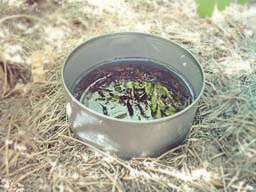
Another key method of earwig control is trapping and there are several suggestions on how to do this. Experiment and see which is the best for your situation.
- Take advantage of their attraction to vegetable or fish oil and use an oil trap. Take a low sided can with a centimeter or two of oil in the bottom. Sink it into the ground near your target plants so the top of the can is level with the soil. If you would like to, add a tablespoon each of molasses and soy sauce and mix well together. It may take a few days for the mixture to ‘age’ and become attractive to the earwigs.
- Fill an old container with water and pour in a small amount of raw linseed oil. This will sit on top of the water. The earwigs are very attracted to the linseed oil and will fall in and drown. (Thanks to Tracy Wilson of Kapunda, South Australia for this tip.)
- Use a damp rolled up newspaper, corrugated cardboard or a short piece of hose and place on the soil near plants just before dark. Earwigs will congregate inside and then be disposed of in the morning.
Disposing of your trapped earwigs – In the morning:
- Shake accumulated earwigs into a pail of soapy water.
- Place them in a plastic bag and crush.
- Feed them to the chickens and ducks if you have them.
Slaters
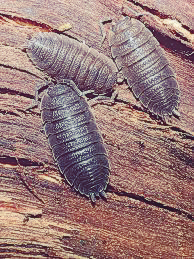 Slaters, also known as Pillbugs, Wood Lice and Roley Poleys are not insects but one of only two species of crustaceans adapted to living solely on land. This means they are more closely related to lobsters and prawns and why they still need to live in a fairly moist environment. These little creatures are scavengers which mean that they mainly feed on rotting vegetation, animal remains and other decaying organic matter. In this way they help create compost and build soil, which makes them very valuable in the garden. However sometimes they do become a problem by enjoying living vegetable matter like our seedlings!
Slaters, also known as Pillbugs, Wood Lice and Roley Poleys are not insects but one of only two species of crustaceans adapted to living solely on land. This means they are more closely related to lobsters and prawns and why they still need to live in a fairly moist environment. These little creatures are scavengers which mean that they mainly feed on rotting vegetation, animal remains and other decaying organic matter. In this way they help create compost and build soil, which makes them very valuable in the garden. However sometimes they do become a problem by enjoying living vegetable matter like our seedlings!When populations are high, they can damage new seedlings and ripe fruit, such as strawberries that are in contact with the ground.
Cultural Control
Sanitation and Other Controls
As with earwigs, where slaters are causing problems, try to make the garden less favorable to them. Slaters shelter under objects in contact with the ground so reduce the number of refuge sites by removing empty pots, stacks of timber, bricks and rocks. Follow the above suggestions for earwigs and here are a few more-
- Slaters like cover, so keep mulch well clear of new seedlings and freshly sown seed.
- Tough stems are not very attractive to slaters, so protect new seedlings with plant collars made from cut drink bottles or old pots with the bottom cut out.
- Keep fruit off the ground by growing in pots or over structures.
- Use coffee grounds around the base of new seedlings to deter slaters.
- Make a spray of 1 litre water, ½ teaspoon pure eucalyptus oil and a teaspoon of dishwashing liquid. Spray the ground around your precious plants, but try not to get it on the foliage as it will burn.
- Let your poultry forage if allowed or use them to clean up veggie beds between crops.
Trapping
Trapping can also be useful for slaters-
- Take advantage or their attraction to moist areas by using water traps with something sweet added like honey, sugar or fruit juice. Bury a saucer or lid in the soil and cover with an upturned pot or saucer lifted slightly off the soil.
- Create slater shelters using such materials as piles of wet crumpled paper, rags, or melon skins wet side down. In the morning, collect slaters and dispose of them as with earwigs.
- Cut either a large potato or orange in half, scoop out the halves and place near problem areas. Remove when full of slaters.
- Try the yogurt or sour cream trap shown below.
- If these don’t work, you can use snail bait, but please use with caution and common sense. Placing pellets under pots or in snail traps is the best idea to keep away from children and animals.
I hope this has helped you to understand a little more of the wonderful hidden world of our gardens.
Until next time happy pottering,
Amanda


